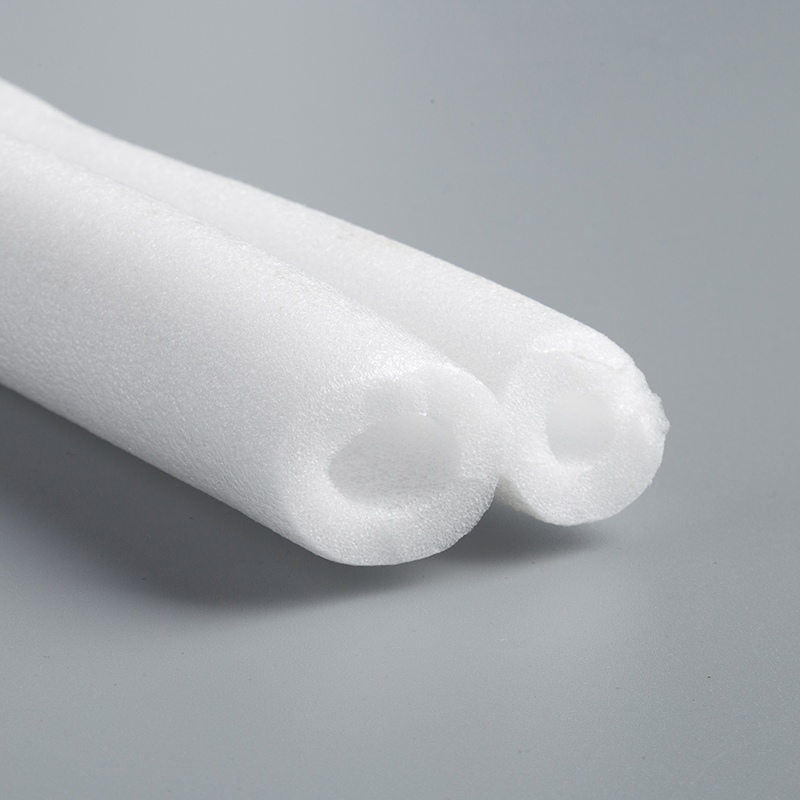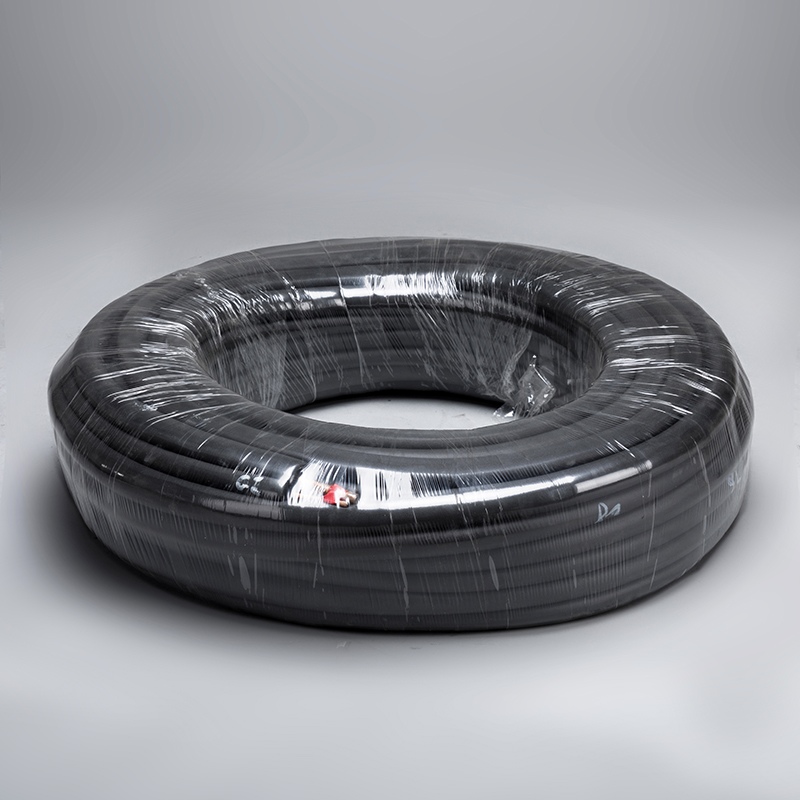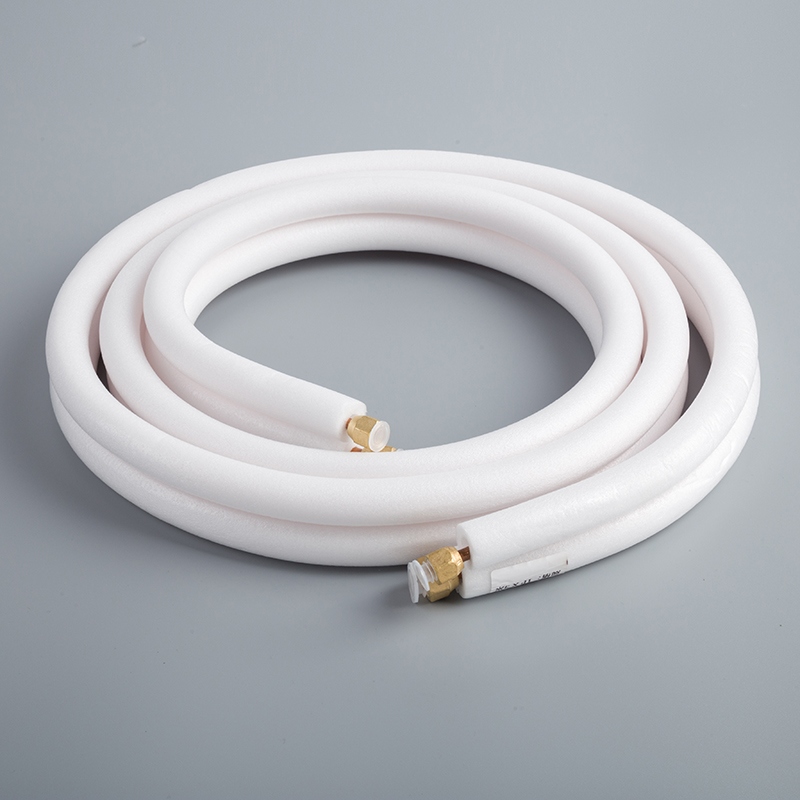How to Choose the Right Refrigeration Pipe for HVAC Systems

Choosing the right refrigeration pipe from a reputable refrigeration pipe factory is very important for HVAC systems. It helps them work better and last longer. Good pipes stop energy waste, prevent leaks, and improve performance. For example:
Medium grocery stores can save $32,000 a year by using 20% less energy.
Saving 30% energy could mean $48,000 saved yearly.
Small places like doctor’s offices can save $4,800 to $7,200 each year.
Using strong materials from trusted refrigeration pipe factories helps refrigerants flow better. This lowers costs and makes systems more efficient.
Key Takeaways
Picking the right refrigeration pipe helps HVAC systems work better and last longer. Good pipes save energy and stop leaks.
Copper pipes are strong and great for high-pressure systems. They don’t rust and let refrigerant flow easily, making them a popular choice.
PVC pipes are light and cheap for low-pressure systems. They don’t work well for high-pressure or outdoor use because sunlight can damage them.
Steel pipes are tough and good for heavy-duty jobs. Galvanized steel stops rust and lasts a long time.
Taking care of refrigeration pipes and adding insulation prevents leaks and helps the system run well. Check pipes often to find problems early.
Types of Refrigeration Pipes

Copper Pipes
Copper pipes are a popular choice for refrigeration systems. They are strong, handle heat well, and resist rust. These qualities make them great for HVAC systems. Copper pipes help refrigerants move smoothly and last a long time.
There are different kinds of copper pipes, like the type k copper pipe. This type has thick walls and handles high pressure. It works well for tough HVAC systems. Copper pipes are also simple to install and fix, saving money on repairs.
Standards recommend copper pipes for refrigeration systems. For example:
Specification | Description |
|---|---|
ASTM B 280 | Tubes for air conditioning and refrigeration. Cleaned and capped before shipping. Residue limit is 0.0035 g/ft². |
ASTM B 302 | Threadless Copper Pipe made from alloys with 99.9% copper. Sizes range from ¼" to 12". |
ASTM B 306 | Copper Drainage Tube (DWV) made from alloy C12200. Contains 99.9% copper and specific phosphorous. Sizes range from 1¼" to 8". |
When picking copper pipes, check if they match your refrigerants and system pressure needs. Using good ac copper pipe ensures your system works well and lasts longer.
Tip: Pick copper pipes that meet standards like ASTM B 280. This ensures your HVAC system is efficient and reliable.
PVC Pipes
PVC pipes are light and cheaper than copper. They are strong and resist chemicals, making them useful in HVAC systems. For low-pressure needs, PVC pipes are a smart choice.
Studies show PVC pipes stay strong even in tough conditions, like salty water. This makes them good for places needing durable materials. PVC pipes also need less upkeep, saving time and money.
In North America, water utilities use PVC for pipelines because it lasts long. In HVAC systems, PVC pipes reduce replacements and keep working well over time.
Note: PVC pipes are sturdy but not for high-pressure use. Always check your system's pressure needs before choosing PVC.
Steel Pipes
Steel pipes are strong and work well in industrial refrigeration systems. They handle high pressure and tough conditions. If your HVAC system is heavy-duty, steel pipes are a solid option.
Steel pipes resist damage and carry heavy loads, making them good for outdoor use. But they can rust, so coatings or insulation are needed to protect them.
Compared to copper and PVC, steel pipes are heavier and harder to install. Special tools and skills are often required. Despite this, steel pipes are dependable for demanding HVAC systems.
Tip: Use galvanized steel pipes to prevent rust and make them last longer.
Aluminum Pipes
Aluminum pipes are light, making them simple to move and install. This helps lower labor costs. They are flexible, so they can fit unique designs easily. Aluminum has a natural oxide layer that protects it from rust, making it good for outdoor use.
But aluminum pipes have some downsides. Some alloys don’t resist rust as well as stainless steel. This can make them less durable in tough conditions. Welding aluminum is harder because of its oxide layer, which raises installation costs. Even with these issues, aluminum pipes are popular because they are recyclable and weatherproof.
Aspect | Benefits | Drawbacks |
|---|---|---|
Weight | Light, easy to move and handle | Not as strong as other materials |
Corrosion Resistance | Oxide layer protects against rust | Some alloys don’t resist rust like stainless steel |
Flexibility | Can bend to fit different designs | Welding needs special tools, which costs more |
Durability | Resists weather and UV rays, lasting longer | Welding wears out tools faster, making it pricier |
Recyclability | Fully recyclable, using less energy than making new aluminum |
Tip: Aluminum pipes are great for outdoor systems needing light materials. Pick the right alloy for your environment to get the best results.
PEX Pipes
PEX pipes are cheap and work well for HVAC systems. They bend easily, making them good for tight spaces. PEX pipes don’t rust, so they need less fixing over time. They cost less than copper pipes, which is helpful for saving money.
However, PEX pipes don’t last as long as copper pipes. They can get damaged by sunlight, so outdoor use needs extra protection. Indoors, PEX pipes are strong, but sunlight can weaken them. Keep them away from direct sunlight to make them last longer.
Parameter | Copper | PEX |
|---|---|---|
Cost | Expensive | Cheaper |
Lifespan (Years) | 50 – 70 | 40 – 50 |
Maintenance | Can leak and rust | Doesn’t rust but can be harmed by sunlight |
Note: PEX pipes are best for indoor systems where bending and saving money matter. For outdoor use, protect them from sunlight to keep them working longer.
Key Factors to Consider When Choosing a Refrigeration Pipe
Pressure and Temperature Requirements
Think about your HVAC system's pressure and temperature needs when picking pipes. Pipes must handle pressure without breaking or bending. They also need to survive very hot or cold temperatures to stay strong.
Smaller pipes can cause big pressure drops. This makes the system use more energy to keep the right temperature. Bigger pipes lower pressure drops but slow refrigerant flow, which hurts heat transfer. Large systems need a good balance to avoid using too much refrigerant, which can harm the environment.
Choose pipes that fit your system's pressure and temperature needs. For example, copper pipes are great for high-pressure systems. PVC pipes work better for low-pressure setups.
Tip: Check the manufacturer's guide to make sure the pipe material fits your system's needs.
Compatibility with Refrigerants
Not all pipes work with every refrigerant. Some materials can react badly, causing leaks or rust over time. Before choosing, make sure the pipe material matches your HVAC system's refrigerant.
Copper pipes work well with most refrigerants and resist chemical damage. Steel pipes may need coatings to stop rust when used with certain refrigerants. PEX pipes are cheaper but might not suit all refrigerants because of their makeup.
Using the wrong pipe material can shorten your system's life and raise repair costs. To avoid problems, check your HVAC manual or ask an expert about compatibility.
Note: Picking the right pipe material helps refrigerants flow smoothly and prevents leaks or system issues.
Installation Environment (Indoor vs. Outdoor)
Where you install pipes matters a lot. Indoor setups face fewer problems since they’re safe from weather. PEX or PVC pipes are good choices indoors because they’re cheap and easy to install.
Outdoor setups need tougher pipes to handle sunlight, rain, and temperature changes. Aluminum pipes resist rust and work well outside. Steel pipes are also strong but need coatings to stop rust.
Insulation is key for outdoor pipes. It saves energy and protects pipes from temperature changes. This boosts efficiency and helps pipes last longer.
Tip: For outdoor systems, pick durable materials and use insulation to protect pipes and keep the system working well.
Corrosion Resistance
When picking refrigerant pipes, think about how they resist corrosion. Corrosion can weaken pipes, causing leaks and system problems. Different HVAC pipe materials protect against corrosion in different ways. Copper pipes are great at resisting corrosion. They create a protective layer that stops damage.
Steel pipes can rust if they don’t have a coating. Galvanized steel pipes have a zinc layer that helps stop rust. Aluminum pipes resist corrosion naturally because of their oxide layer. But some aluminum alloys may not work well in tough conditions. PEX and PVC pipes don’t rust, but sunlight can harm them over time.
Tip: For outdoor systems, pick pipes that resist corrosion to make them last longer.
Budget and Cost Considerations
Cost is important when choosing refrigeration pipes. You need pipes that work well but don’t cost too much. Copper pipes are strong but can be pricey. PEX and PVC pipes are cheaper and good for indoor use.
Here’s a table showing how pipe choices affect costs and results:
Outcome Type | Indicators | Description |
|---|---|---|
Infrastructure Output | Pipe length installed | New pipes added to connect homes to the system |
Project Output | Homes connected | Families now have water access without leaving their homes |
Short Term Outcome | Clean water use | Families use clean water instead of unsafe water |
Long Term Outcome | Fewer water-related illnesses | Less sickness like diarrhea and better health for kids |
Goal | Health improvements | Fewer sick days, lower child deaths, and better growth |
This table shows how picking the right pipes can save money and improve results. Good materials lower repair costs and make systems work better. Always compare upfront costs with long-term savings and performance.
Note: Talk to HVAC experts to find affordable pipes that meet your needs.
Pros and Cons of Different Refrigeration Pipe Materials

Copper Pipes: Advantages and Disadvantages
Copper pipes are strong and work well for refrigerant systems. They resist rust, keep refrigerants cool, and handle high pressure. Their lightweight design makes installation easier and faster. Copper pipes last a long time, often staying strong for decades.
But copper pipes can be costly, which may affect budgets. Bad installation, like poor soldering, can cause rust problems. Water with too much acid or base can damage copper pipes faster. This makes them less suitable for certain places.
Tip: Check your area's water quality before picking copper pipes.
PVC Pipes: Advantages and Disadvantages
PVC pipes are cheap and easy to install for low-pressure systems. They resist water damage and help save energy in big buildings. Over time, PVC pipes need less fixing, which saves money.
Still, PVC pipes have limits. They can’t handle heat above 140°F. They don’t last as long as metal pipes. PVC pipes are heavier than metal ones, making setup harder. They also don’t mix well with metal parts, limiting upgrades.
Note: PVC pipes are best for cool systems where saving money matters.
Steel Pipes: Advantages and Disadvantages
Steel pipes are tough and great for heavy-duty refrigerant systems. They handle high pressure and last longer outdoors with a zinc coating. Steel pipes are perfect for industrial HVAC setups.
However, steel pipes are heavier and harder to install. They need special tools and skills for setup. Steel pipes also need regular care to stop rust and keep working well.
Tip: Pick galvanized steel pipes for outdoor use to avoid rust and reduce upkeep.
Aluminum Pipes: Advantages and Disadvantages
Aluminum pipes have many good points for HVAC systems. They are light, making them easy to carry and install. This lowers labor costs. Aluminum is also cheap because the raw materials cost less. Its flexibility helps it fit into tricky designs, which is great for complex setups. Plus, aluminum pipes can handle sunlight and bad weather, so they work well outside.
But aluminum pipes also have problems. They don’t work well with some liquids, like water, which can cause rust. When aluminum touches water, it makes hydrogen gas. This can mess up how refrigerants move in the system. This issue gets worse when there’s low heat. Aluminum also doesn’t transfer heat as well as copper, which can make systems less efficient.
Here’s a quick comparison:
Materials | Advantages | Disadvantages | Application Scenarios |
|---|---|---|---|
Aluminum | Cheap, lightweight, easy to shape | Can rust, lower heat transfer, not good with water | Aerospace and systems needing light materials |
Tip: Aluminum pipes are best for outdoor systems where weight and cost matter. If using water-based refrigerants, pick something like type l copper pipe for better results.
PEX Pipes: Advantages and Disadvantages
PEX pipes are a flexible choice for HVAC systems. They bend easily, which makes them simple to install in tight spots. This saves time and money on fittings. PEX pipes don’t rust or get buildup, so they last a long time. Experts say they can work for over 50 years if installed right. PEX systems also save water, making them a smart choice for homes and businesses.
However, PEX pipes have downsides. They can’t handle sunlight for long without protection, so they’re not great for outdoor use. Chemicals from PEX materials might leak, which could be a problem for drinking water systems. While strong indoors, PEX pipes need extra care to last outside.
Here’s a breakdown:
Aspect | Evidence |
|---|---|
Durability and Longevity | Strong and resists common plumbing problems |
Lifespan | Can last over 50 years |
Installation Flexibility | Easy to install because of bending ability |
Health Concerns | Possible risks from chemical leaks |
UV Resistance | Weak against sunlight; needs protection for outdoor use |
Cost-Effectiveness | Saves water and reduces costs |
Note: PEX pipes are great for indoor systems where bending and saving money are important. For outdoor use, protect them from sunlight to make them last longer.
Practical Tips for Installation and Maintenance
Proper Insulation for Refrigeration Pipes
Adding insulation to refrigeration pipes helps save energy. It also makes the system work better. Use the right thickness for the pipe's temperature needs. Don’t press the insulation too tightly, as it lowers efficiency. Outdoor pipes need UV protection to handle sunlight and weather changes.
Clean the pipes before adding insulation. Dirt or water can weaken the glue. Seal all joints and seams tightly to stop leaks. Stick the insulation to the pipe every 12 to 18 feet for better results. If working on a green project, use adhesives with low chemicals to meet eco-friendly rules.
Guideline | Description |
|---|---|
Compliance | Follow codes and manufacturer instructions. |
Insulation Thickness | Pick the right thickness for the pipe's temperature. |
Sealing | Seal all seams and joints tightly. |
UV Protection | Protect outdoor insulation from sunlight and weather. |
Avoid Compression | Don’t press insulation to keep it working well. |
Space Between Pipes | Leave room between pipes for expansion. |
Clean Surface | Make sure the pipe is clean and dry. |
Adhesive Use | Stick insulation to the pipe every 12 to 18 feet. |
LEED Compliance | Use low-chemical adhesives for eco-friendly projects. |
Tip: Good insulation lowers refrigerant pressure drops and improves system performance.
Avoiding Common Installation Mistakes
Mistakes during setup can cause expensive repairs and poor performance. For example, attaching metal flashings wrong can lead to water damage. One apartment complex in Arizona had big problems because of this. Another study showed that ignoring standards caused issues in a large condo complex.
To avoid these problems, make sure all parts are secure and follow building rules. Don’t skip steps during installation, as it can harm the system. Learn about refrigerant pressure guidelines to keep the system running smoothly.
Wrongly attached metal flashings can cause water damage.
Ignoring standards often leads to construction problems.
Following ASTM E2128 rules ensures proper checks.
Note: Hiring professionals makes installation easier and avoids costly errors.
Regular Maintenance to Prevent Leaks and Corrosion
Regular checks keep refrigeration pipes in good shape. Look for leaks, rust, or damage often. Outdoor pipes need extra care because of weather and sunlight. Aluminum and steel pipes may need coatings to stop rust.
Learn about the risks of DIY maintenance. Professionals offer warranties and follow safety rules. Surveys show 44.4% of experts suggest teaching customers about DIY risks. Another 21.1% focus on tasks DIYers can’t do.
Tip: Check pipes regularly to fix problems early and make them last longer.
When to Replace Refrigeration Pipes
Replacing refrigeration pipes on time keeps your HVAC system working well. Pipes can wear out from rust, leaks, or damage. Spotting problems early saves money and prevents bigger issues.
Signs That Show Pipes Need Replacement
Frequent Leaks: If leaks happen often, the pipes are wearing out. Fixing them temporarily won’t help for long.
Corrosion or Rust: Pipes in wet or harsh places can get rusty. Rust makes pipes weaker and causes refrigerant loss.
Reduced Efficiency: If your system cools or heats unevenly, damaged pipes might be the reason.
Physical Damage: Cracks, dents, or bends in pipes can block refrigerant flow and hurt the system.
Tip: Check pipes regularly to catch these problems early.
Things That Affect How Long Pipes Last
How long pipes last depends on several things:
Factor | Effect on Pipe Life |
|---|---|
Material | Copper lasts longer than PVC or PEX. Steel needs coatings to stop rust. |
Installation Quality | Bad installation can make pipes wear out faster. |
Environmental Conditions | Outdoor pipes face sunlight, rain, and temperature changes. |
Maintenance Routine | Cleaning and checking pipes often helps them last longer. |
When to Replace Pipes
Replace pipes if repairs happen a lot or the system struggles to work well. Older systems can work better with new materials like copper or aluminum.
Note: Ask an HVAC expert to check your system and suggest replacements.
By acting early, you keep your HVAC system running smoothly and avoid sudden problems.
Picking the right refrigeration pipe helps HVAC systems work well. Correct pipe sizing stops energy waste and keeps cooling reliable. Using strong materials like copper or steel makes systems last longer and need fewer repairs.
As cities grow, more HVAC systems are needed. Cooling energy use might triple by 2050. Choosing the right pipe size can meet this need and protect the environment.
Talk to HVAC experts and trusted pipe factories for advice. They can help you pick the best pipes for your commercial AC systems. This ensures your system works efficiently and saves money.
Tip: Strong pipes cost less in the long run and improve performance.
FAQ
What is the best material for HVAC refrigeration pipes?
Copper pipes are a top choice. They don’t rust, handle high pressure, and last many years. If you need another material, ask experts at a pipe factory for advice.
How can I tell if my refrigeration pipes need replacing?
Leaks, rust, or poor system performance mean pipes might need replacing. Cracks or dents also show it’s time for new pipes. A pipe factory can help you pick strong replacements.
Are PVC pipes good for outdoor HVAC systems?
PVC pipes aren’t great for outdoor use. Sunlight can damage them over time. For outdoor systems, aluminum or steel pipes work better. Experts at a pipe factory can suggest the right materials.
How does insulation help HVAC pipes work better?
Insulation saves energy and protects pipes from heat or cold. It also stops refrigerant pressure drops. Outdoor pipes need insulation that blocks sunlight. Pipe factories can provide the right insulation for your system.
Why should I talk to a pipe factory before buying pipes?
Pipe factories give expert advice on materials, sizes, and refrigerant compatibility. Their help makes sure your HVAC system works well and lasts longer.
See Also
The Benefits Of Selecting Copper Pipes For AC Systems
Transforming HVAC With 1/4 And 3/8 Copper Pipe Coils
The Importance Of Pure Copper Pipes In Air Conditioning


